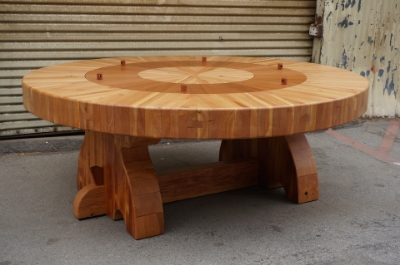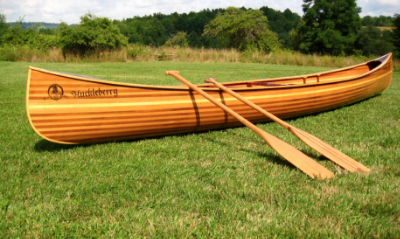Wade Graham
By Adam Vitcavage
Wade Graham is a Los Angeles-based historian who has written two books exploring urbanism, landscape, and architecture. His first book, American Eden, entwined gardening and history into an insightful exploration on what gardens throughout history can reveal about our culture. His second book, Dream Cities, explores seven concepts, ranging from castles to malls that shaped the modern world.
While these ideas may sound tediously specific, Graham’s writing is engaging and welcoming. You don’t need to be an expert or academic studying these topics to enjoy the books. In fact, they weren’t written for that purpose. Dream Cities gives a person walking down the street an insight into why the world is the way it is.
Graham was kind enough to offer a primer on his book, what it’s like to write nonfiction for the general public, as well as briefly discuss his next project.
Adam Vitcavage: I wanted to start with your background. You seem to have a lot of titles, but they all seem to work hand in hand.
Wade Graham: I have done a series of things in life and still do a series of things. One of them is as an academic. I’m a historian; my PhD is in U.S. History and with a master’s degree in the History of Science. I teach at Pepperdine University’s graduate School of Public Policy. I teach Urban and Environmental Policy.
I also design gardens, which led to my first book American Eden. I’ve also done journalism, which is recently been about environmental and cultural topics.
Those things just are just a mix of cultural history and policy analysis.
AV: The structure of this book are the seven major trends of cities. There’s a little bit of biography and history. How did you come up with these seven trends?
WG: I was trying to answer a baffling question. If you look at modern cities—built since 1850—there are two things that are irreconcilable about modern cities. First, they are very chaotic. They’re made of all different parks; they’re not coherent. Pre-modern cities tend to have one type. You go to Venice and all of the buildings are the same height except for the churches. Everything is made out of the same stuff. Modern cities you don’t get that coherence. You get things banging into each other. There’s a skyscraper here, there’s a freeway there, there’s a mall over there, and a weird suburbia here.
Everywhere you go in the world, you see the same things. You can be in Mongolia and you can see skyscrapers that look the same as the ones you’ll see in Australia, Russia, and Detroit. You’ll see malls that look the same in Singapore. They’ll look a little different, but at the same time there are what architects call typologies. Which are not what buildings look like on the surface, but their basic form. Those are the same all over the world. That struck me as an odd fact.
Why would Melbourne look exactly like Moscow and exactly like Atlanta?
I tried to boil it down to what the basic types were and I got seven. I gave them names to treat them like types of birds. That way you can look out at any modern city and point at something and say that’s a mall or that’s a skyscraper.
In every case there was one person behind each idea who either invented it or built its example and sold it to everyone in the world. I had to begin with the biography of one—or sometimes a cluster—of architects, designers, and thinkers. Then I had to explain what the idea was. Each of these carries intention and an idea forward. In some cases these were very utopian ideas. Even in the case of slab high-rise skyscraper housing. It started as a utopian idea, but ceased being that. This book is my way to understand to see where these ideas came from and how they changed people.
AV: You wanted to know about this, but when did this idea first seep into your mind?
WG: It seeped into my mind when I was trying to understand landscape and how it structures space. One thing interesting about people in the west is that we notice a lot of things. I could look at your car and know a lot about you. I can look at your handbag and know even more about you. I can psychoanalyze you. But we’re pretty stupid about our physical environment. I can put a very well educated person in the street and ask them what they see and where it came from and they come up blank.
We’re trained in our culture to notice certain kind of objects and ignore the context we’re in. That struck me as interesting because context has a lot of meaning.
I live in a little 1921 wooden bungalow. It’s kind of unremarkable for my neighborhood, but it was utopian form. It was built by white Methodists from Iowa to build with the strict intentions to build a white, religious community on the west coast that was going to be different than the cities that they came from. Most of modern cities are a rebellion against cities at all. They’re anti-urban. The way we build cities is a rejection of the idea of a city. Even the skyscraper has its roots in the rejection of the city. Cities were thought to be chaotic and have too many things going on, too many mixes of people going on. They were meant to bring order and control to the city.
AV: How was the research for this conducted?
WG: It was really research intensive. Training as a journalist and as a historian makes you not question how much research needs to be done to get to the bottom of something. A huge amount of my research was based around going to the Los Angeles Public Library and going through their catalogue and making notes.
The way I write nonfiction is just to collect all of the footnotes you’re going to end up having and put them in order. Then you put sentences in between them. It’s a bit like building a building out of bricks. You go get all of the bricks and put them in the write order, then you stack them up one by one.
It was very methodical research: finding a clue then being led to another clue. The story just builds itself.
AV: I found your book’s voice very friendly. I’ve read some nonfiction that is a lot of academic, dry jargon. Yours was very intellectual, but very accessible. When you’re writing a heavily researched book like this, is it ever for the academic or for the general public who just happens to be interested in the subject?
WG: Absolutely not for the academic. I’m a reformed academic in a lot of ways. I learned as a journalist that you need to speak simply and clearly so that people get what you’re saying. To be honest with you, these books have been written for non-academic people. For smart people, yes, but for people who are generally interested in their culture. I have to hit my academic knuckles with a ruler to keep that type of writing out of the book. It’s difficult, but it’s required.
AV: Moving forward, are you working on another book?
WG: I am researching another book. I found myself really tired of all of that footnoting and the careful legalistic way of writing where you care about facts more than anything else. Also as a historian you’re taught to write from 30,000 feet. You see the big picture, you use statistical layers of proof, and that’s how you proceed.
When I moved to where I live now, which is three blocks from Dodger Stadium, one block from Sunset Boulevard, on a two-block long street that was put together in the 1910s and 1920s. It suffered white flight and gang infestation and now is reviving the way many of our central cities are.
I realized on this two-block long street that there were thirty different nationalities. Most of them were refugees from American wars. There are Cambodian refugees, Vietnamese boat people, Guatemalans whose families were killed by American bullets in the 1980s, there are Latvian refugees from World War II, and so on. I thought about how this is the history of the world on two city blocks. It’s also the history of the American cities rise then decline and rise again.
What I’ve been doing is interviewing every type of person in my neighborhood I can find. I mean every kind: homeless, prostitutes, gang members, prosecutors, old ladies, hipsters, skate punks, everybody. I’m trying to layer a story like a journalist would. It’s a collection of different stories, how they intertwine and how they coexist.
I’m trying a textured, more human thing than flying overhead way of academic writing. I’m writing the history of Echo Park. Through Echo Park, a history of Los Angeles. Through Los Angeles, a history of American cities over a hundred years.
To learn more about Wade Graham, visit his official website or follow him on Twitter @wadelgraham.






















